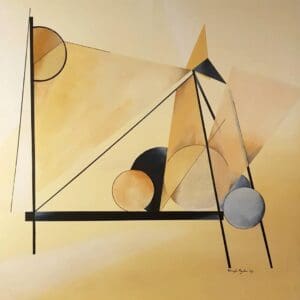After the Second World War there followed a huge transitional period across Europe and the United States. Major reconstruction was the order of the day across Europe and, slowly, an increasing prosperity and abundance was enjoyed by the populous in these territories. It was the dawn of a new era, but it wasn’t until the 1960s that the emerging “consumer” society gave rise to a demand in goods that were simply unobtainable until then.
British pop art can trace its roots back to the mid 1950s. A small independent group comprising notable artists at that time together with critics in the art world put together an exhibition which was held at the Whitechapel Art Gallery in 1956. This exhibition was a focus on the topic of cheap consumer products and the role that they played in modern life. Although it didn’t seem like it then, the exhibition was a major step forward in the art world and a huge departure from what had gone before it. The erstwhile critic, Lawrence Alloway (1926-1992) hailed it as the birth of something new and in 1958 he christened this distinctive style of art as “Pop Art”.
Key figures in the British pop art scene that followed were Richard Hamilton (b. 1922) whose work depicted cars, pin-up models and electric appliances, amongst others. Peter Blake (b. 1932), on the other hand, concentrated on comic strips and pop singers while the magazine collector Eduardo Paolozzi (b. 1924) produced impressive collage prints by recycling and integrating old advertisement material with comic-strip images.
As for the US, during the 1950s the art world was dominated by “Abstract Expressionism”. It was until the early 1960s when art critics and American artists alike began to embrace Pop Art and give this new style of art their own inimitable American “take”. In 1962, an exhibition entitled “New Realists” was held at the Sidney Janis Gallery in New York. This was ground-breaking in America, not least because the exhibition featured work from artists including Andy Warhol (1928-1987), Roy Lichtenstein (1923-1997), Claes Oldenburg (b. 1929), Jim Dine (b. 1935) and James Rosenquist (b. 1933). Of these, Warhol, Lichtenstein and Oldenburg went on to become key figures on the pop art world. Warhol became a household name.
Indeed, Warhol’s fame elevated in 1962 after his “Campbell’s Soup Cans” work was produced and featured in separate works – firstly as individual “cans” and then the same cans aligned in immaculate rows. Marilyn Monroe and Jackie Kennedy, possibly the biggest 60s female icons at the time, were also given the “Warhol treatment” in which he silk screened their images, altered the colours and reproduced them in repeated patterns.
Roy Lichtenstein was very much a “comic-strip” artist and produced masses of works using imagery from comics. Starting out in 1960, he painted vastly-inflated images of comic-strip frames formed from the dots of colour newsprint. During the same year, Oldenburg set about carving his own niche in the pop art world, creating large, painted plaster sculptures of sandwiches and cakes! These were soon followed by huge plastic appliances that were softened to allow them to give a distinctive “droop”. All of it was designed explore the nature of “consumer culture” that was sweeping the nations on both sides of the Atlantic.
With mass consumer commercialism on the rise at an alarming pace (and seemingly with no end in sight) “Pop Art” remains very much alive and is perhaps even more poignant and thought-provoking today as it was even in the mid twentieth century.
Source by Sam Tennyson
Disclaimer: The views and opinions expressed in this article are those of the authors and do not necessarily reflect the official policy or position of Irish Artmart.





